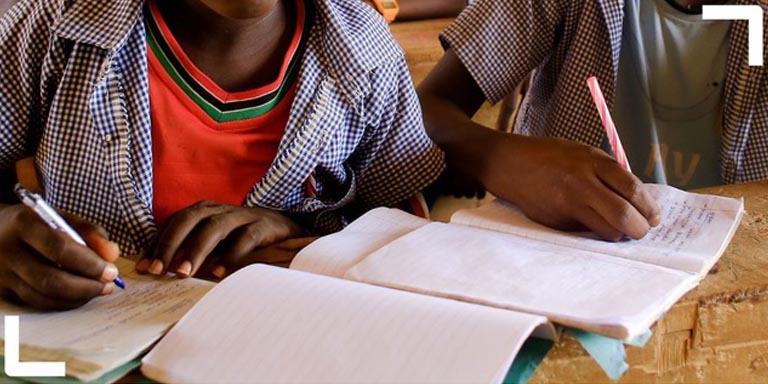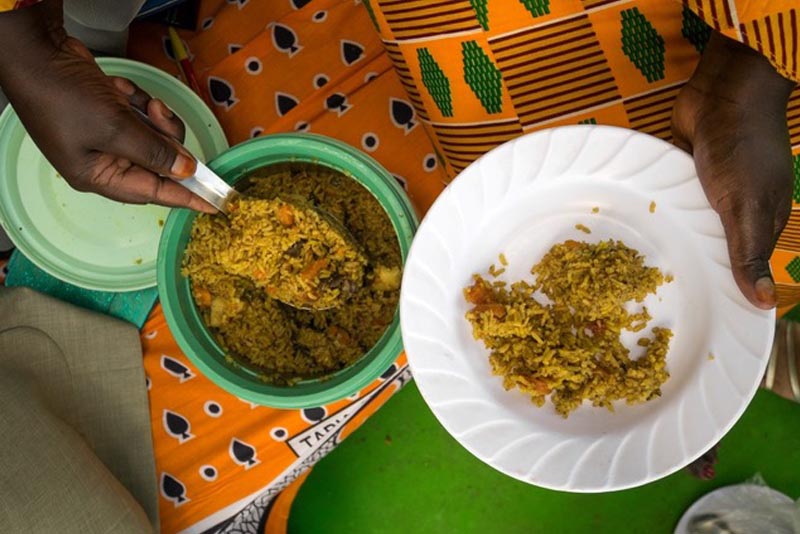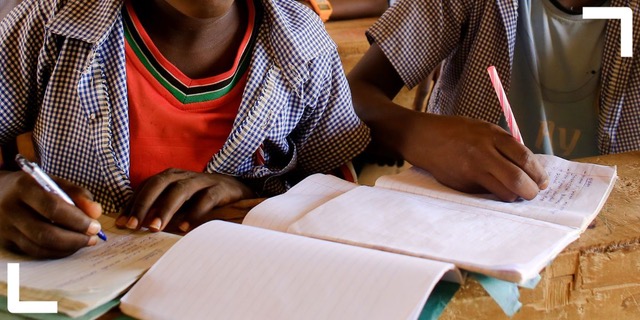
Background to the school feeding programme in Kenya
Kenya’s track record in implementing a school feeding programme for nearly 30 years is a testament to its evolution. Over the decades, the programme has been pivotal in providing meals for pre-primary and primary school children.
The first documented school feeding programme was initiated in 1979 by the late President Moi, who provided fresh milk known as “Nyayo Milk”. This initiative aimed to increase enrolment and attendance amongst pre-primary and primary school children in public schools. It set the stage for subsequent national and local governments to continue this legacy – although not necessarily providing milk – by initiating similar programmes or collaborating with different development partners, NGOs and private sector organisations to provide school meals.
The legal and policy framework
The National School Meals and Nutrition Strategy 2017-2022 in Kenya serves as a crucial framework for implementing school meals and nutrition programmes. It aligns with national and international obligations and is supported by key documents such as the Kenya Constitution, Vision 2030 and various education plans.
These documents underscore the government’s commitment to providing resources for school meals and addressing health and nutrition needs in schools. The national school meals strategy includes implementing National School Health Policies, ensuring adequate nutrition for school-age children and addressing specific micronutrient deficiencies that can affect students’ performance.
Gaps in the regulatory framework
While the school feeding programme in Kenya has a long history, there is a pressing need for clear guidance from the national and county governments on how to run the initiative effectively. Challenges such as inconsistent political commitments, limited resources and a lack of a clear operational plan could impede the implementation of the National School Meals and Nutrition Strategy.
Both past and current governments have prioritised the school feeding programme to address issues such as high school dropout rates, poor academic performance and increasing cases of malnutrition. If managed well, the initiative’s benefits far outweigh its costs, offering hope for a brighter future for learners in Kenya.
In 2010, the country changed its constitution to give county governments a crucial role in bridging the services gap with the central government. This change allows them to position themselves as key links in ensuring that vulnerable learners have access to school meals. Evidence suggests that without proactive linkages among communities, the political class and policy influencers, and the effective implementation of public policies, social and economic change is unlikely to occur.
Models for school feeding programmes in Kenya
According to the National School Meals and Nutrition Strategy (2017–2022), there are five modalities for implementing the school feeding programme. These modalities include:
- Decentralised modality: Funds are transferred from the national or county governments to local levels, such as devolved government units, schools, community committees or other stakeholders.
- Centralised modality: Procurement is undertaken at either national or county levels, and the food is distributed to schools for preparation.
- Outsourced catering services: The supply and provision of meals is outsourced and catering services may be contracted by schools or governments for food supply and delivery.
- Community-based modality: This presents several options:
- Parents may contribute to school meals and nutrition activities with either food or money.
- Parents may contribute specific funds to school meals and nutrition activities as part of the school levies.
- School farms (also known as school gardens) may supplement the existing food supply and use the farming initiatives as learning projects for health and nutrition education within the school’s pedagogical plan.
- Parents may pack food for their children based on an acceptable standard food basket and guidelines.
- Mixed modality: This enables different stakeholders to organise their school meal and nutrition initiatives according to regional peculiarities, while adhering to national policies and guidelines.

Government commitment to school feeding programmes
In 2023, the Kenyan government signed a Ksh 1.7 billion Intergovernmental Partnership Agreement to expand the school meals programme. The aim was to provide meals for over 1.9 million learners in public schools. The government announced that the initiative would be implemented through a 50:50 partnership between the Nairobi County and the National government. Additionally, Ksh 5 billion was earmarked by the government for the expansion of the programmes to other counties. Nairobi County was allocated Ksh 1.2 billion to feed 250,000 children, with parents contributing five shillings daily and the county covering the remaining costs.
However, there are doubts about whether school children throughout the country can still access meals through the programme in 2025, as this is dependent on whether recently introduced budget proposals associated with the 2024 finance bill – which sparked a wave of protests in Kenya – are implemented or withdrawn. Despite the uncertain national outlook of the school feeding programme due to funding challenges, the Nairobi County initiative, dubbed “Dishi na County”, appears to be on track to meet its objectives.
The Dishi na County programme
Nairobi County has partnered with Food for Education – a well-known NGO with expertise in cooking and delivering food to school children across Kenya – to implement the Dishi na County school feeding programme. Since its inception on 28 August 2023, they have set up several kitchens and provided meals to 184,000 school children from public primary schools and Early Childhood Development Education (ECDE) centres.
So far, 106 schools have been onboarded and receive daily food provisions. Furthermore, the completion of ten central kitchens marks a significant milestone, with plans underway to construct seven more to expand the programme’s reach further.
Food for Education prepares nutritious meals from the central kitchens, packing them in specially sealed containers to keep the meals warm and safe from contamination as they transport them to neighbouring schools in specialised food trucks for transporting hot food.
Parents pay for subsidised school lunches using mobile money, which has nearly 100% penetration in Kenya. The amount is credited to a virtual wallet linked to a near-field communication (NFC) technology-enabled smart wristband, which students use to “tap to eat” every day, taking less than five seconds. Dishi na County does not accept any cash payments for Tap2Eat food.
How can action research help optimise the successes of Dishi na County?
In the case of Dishi na County, the ACRC action research project in Nairobi can answer various questions related to the programme’s reach, cost, cost-effectiveness, quality of a healthy diet, maintenance and sustainability. These insights will be crucial for scaling up the intervention.
The research can also help build an important understanding of how students from informal schools in urban settlements like Mukuru, Mathare, Kibera, Dandora and others can benefit from and participate in the Dishi na County programme.
Why should the school feeding programme be extended to include informal schools?
UN-Habitat estimates that 60-70% of Nairobi’s almost 4.4 million residents (as of 2019) live in informal settlements. In 2020, 382,237 students were enrolled in primary schools across Nairobi City County, and over 60% could not access government schools due to distance. Out of the 850 primary schools, only 24% are government schools.
Informal schools, therefore, provide alternative basic education to many children in informal settlements who cannot attend formal public, private or faith-based schools and early childhood development education (ECDE) centres due to various circumstances. Whether registered or not, these schools and ECDE centres operate under the umbrella of Alternative Provision of Basic Education and Training (APBET) Schools which are often excluded from national and county programmes, support and interventions.
None of Nairobi’s informal schools currently benefit from the County feeding programme. A preliminary study conducted in 2022-2023 in Mathare and Viwandani informal settlements of Nairobi by ACRC identified children as most vulnerable to food insecurity, resulting in poor health and developmental outcomes. The school feeding programme was identified as one of the most impactful interventions for addressing children’s food insecurity.
To bridge this gap, ACRC plans to develop collaborative and sustainable solutions to improve learners’ health and nutrition outcomes in Nairobi’s informal settlements. This will be achieved through action research initiatives in the city, providing actionable evidence on sustainable solutions for learners in informal primary schools, ECDE centres, and home-based daycare centres. The evidence gathered from these initiatives aims to advocate for policy change, support local initiatives and encourage community-driven efforts to strengthen the school feeding programmes.
Note:
Header photo credit: Denis Onyodi / KRCS / Flickr (CC BY-NC 2.0). School children in Kenya.
Note: This article presents the views of the authors featured and does not necessarily represent the views of the African Cities Research Consortium as a whole.

